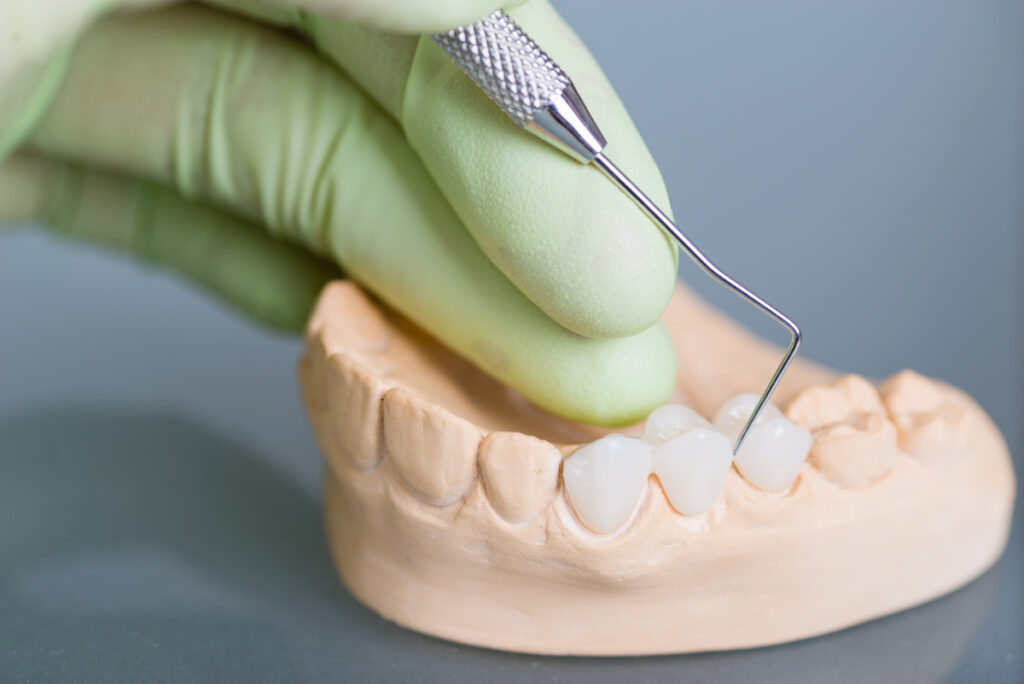Dental bridges provide long-lasting solutions for replacing missing teeth, but situations may arise where removal becomes necessary. Whether a bridge can be safely removed and recemented depends on several factors, including the type of cement used, the condition of the bridge, and the health of the supporting teeth.
Understanding your bridge maintenance and repair options helps you make informed decisions about your oral health. At Dental Specialties Northwest, our experienced team evaluates each case individually to determine the best approach for preserving your dental restoration while maintaining optimal function and aesthetics.
Types of Dental Cement and Their Impact
The type of cement used to attach your bridge significantly affects whether it can be removed and reattached. Traditional zinc phosphate cement, commonly used in older bridges, allows for easier removal because it forms a less permanent bond. These bridges may be removed for cleaning or repair and successfully recemented if the restoration remains undamaged.
Modern resin-based cements create much stronger bonds with tooth structure, making removal more challenging. While these materials provide superior retention and longevity, they often require special techniques or instruments for removal. The removal process may damage the bridge or supporting teeth, making recementation impossible.
Glass ionomer cements fall somewhere between these options, offering good retention while allowing for removal in certain circumstances. Your dentist evaluates the specific cement type and its condition before attempting any removal procedures.
Factors Affecting Cement Strength
Several factors influence how securely your bridge is attached and whether removal is feasible. The age of the cement affects its strength, with older materials sometimes becoming more brittle over time. Environmental factors like temperature changes and chewing forces also impact cement integrity.
The fit of your bridge affects cement performance as well. Well-fitted restorations distribute forces evenly, while poorly fitted bridges may create stress points where cement fails. These variations influence both the need for removal and the success of recementation procedures.
Common Reasons for Bridge Removal
Decay under the bridge crowns represents one of the most frequent reasons for removal. When bacteria penetrate the cement seal, they can cause cavities in the supporting teeth. Early detection through regular checkups may allow for removal, treatment, and successful recementation.
Periodontal disease affecting the supporting teeth may also necessitate bridge removal. Advanced gum disease can compromise the stability of anchor teeth, requiring treatment before the bridge can be replaced. In some cases, addressing the underlying condition allows for recementation of the original restoration.
Bridge damage from trauma or excessive wear sometimes requires removal for repair or replacement. Chips, cracks, or worn surfaces may be repairable if caught early, allowing the restored bridge to be recemented successfully.
Professional Assessment Requirements
Determining whether your bridge can be removed and recemented requires professional evaluation. Digital X-rays reveal the condition of underlying teeth and supporting structures, while clinical examination assesses the bridge’s integrity and cement seal quality.
Advanced imaging techniques help identify problems not visible during routine examination. This comprehensive assessment guides treatment planning and helps predict the success of removal and recementation procedures.
The Removal and Recementation Process
Bridge removal requires specialized instruments and techniques to minimize damage to the restoration and supporting teeth. Ultrasonic devices can break down certain types of cement, while crown removers apply controlled force to separate the bridge from prepared teeth.
The process begins with a thorough examination and photography to document the original position and appearance. Local anesthesia ensures comfort during the procedure, though many removals cause minimal discomfort.
Once removed, both the bridge and prepared teeth undergo careful cleaning to remove old cement residue. The supporting teeth are evaluated for decay or damage, with any necessary treatment completed before proceeding.
Recementation Considerations
Successful recementation depends on the condition of both the bridge and supporting teeth after removal. The interior surfaces of the bridge must be thoroughly cleaned and may require slight adjustments for optimal fit. Supporting teeth need careful preparation to ensure proper cement adhesion.
New cement selection considers the specific requirements of your case, including retention needs, aesthetics, and the potential for future removal. Modern materials offer excellent bonding strength while maintaining some reversibility for future maintenance.
The recementation appointment involves careful positioning of the bridge, removal of excess cement, and verification of proper bite alignment. Follow-up appointments monitor the success of the procedure and address any concerns.
Alternative Solutions When Recementation Isn’t Possible
When bridge removal damages the restoration beyond repair, replacement becomes necessary. Modern materials and techniques often provide superior aesthetics and function compared to older restorations. Digital impressions and CAD/CAM technology can create precise replacements in less time than traditional methods.
Dental implants may offer a preferable alternative to bridge replacement in certain situations. Implants don’t rely on adjacent teeth for support, potentially preserving more natural tooth structure while providing excellent stability and longevity.
Partial dentures represent another option when bridge replacement isn’t feasible. Modern partial dentures offer improved comfort and aesthetics compared to older designs, though they don’t provide the same stability as fixed restorations.
Expert Bridge Care at Dental Specialties Northwest
Dental Specialties Northwest provides comprehensive evaluation and treatment for all types of dental bridges at our advanced Seattle practice in the Columbia Tower. Dr. Tom Sweeney and Dr. Rhys Spoor bring decades of restorative experience to every case, combining technical precision with conservative treatment approaches.
Our team utilizes advanced diagnostic technology to assess bridge condition and supporting structures, ensuring accurate treatment planning and optimal outcomes. We understand the value of preserving existing restorations when possible while providing superior alternatives when replacement becomes necessary. Whether your bridge needs evaluation, removal, or replacement, Dental Specialties Northwest delivers exceptional care with lasting results. Contact us at (206) 682-8200 to discuss your bridge restoration needs with our experienced team.


